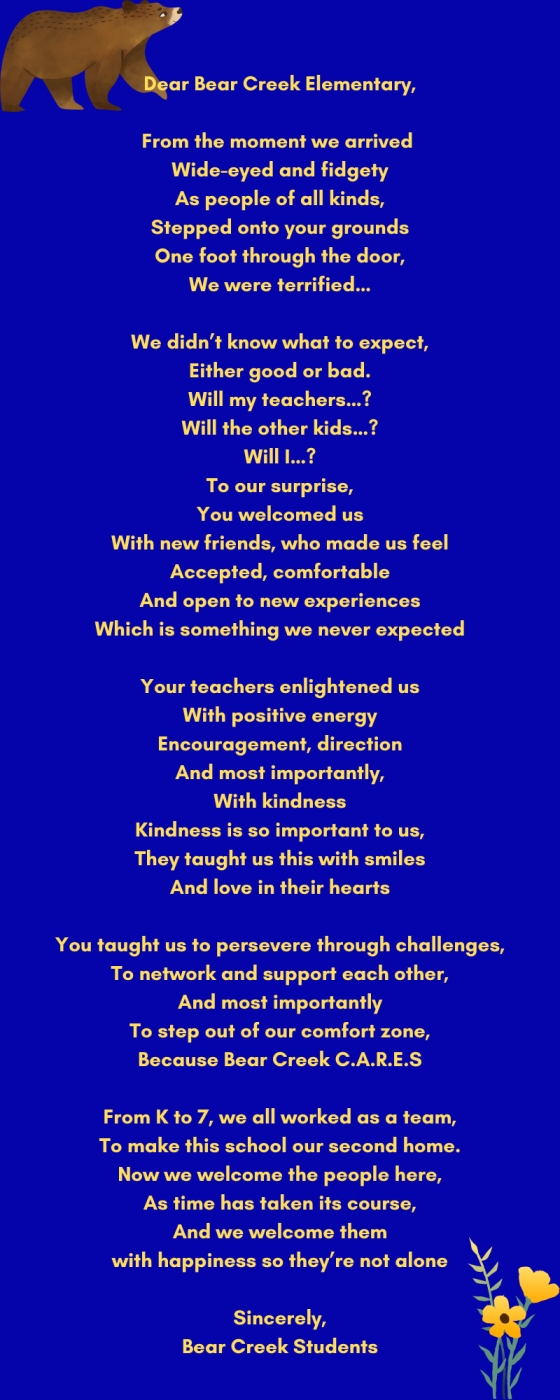Bear Creek Elementary
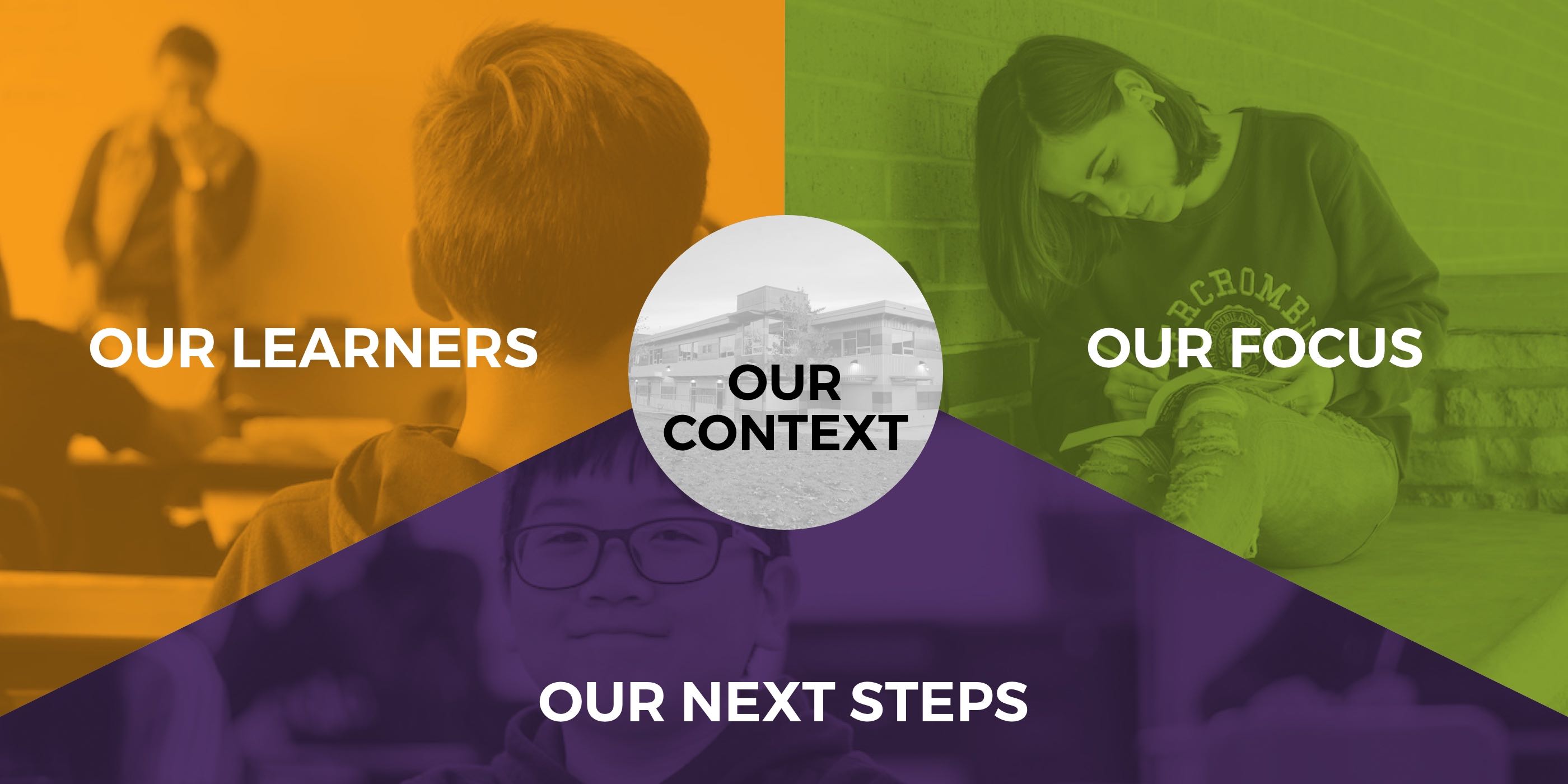

OUR CONTEXT
This Is Bear Creek Elementary's Story
This is Who We Are
A Letter From Our Grades Seven Students To You....
At Bear Creek Elementary, we promote interactive learning, mutual respect, responsibility for learning, and a sense of belonging. We pride ourselves on providing a welcoming school environment that embraces community involvement. Building leadership skills is a goal which is built into all our academic and social responsibility experiences. We continually work towards creating a culture that embraces the diversity of our students and an understanding of each student’s individual story.
It is important for us to provide support to our learners as it makes them feel safe, cared for, and allows them to thrive, both in and out of the classroom. We work in partnership with Community Schools providing opportunities for our students to participate in several different programs: ‘Girls in Action’, PAWS After-School Program, and Star Power. Empowering our students to make them feel that they have opportunities to positively impact their school and community is a focus. Students in the intermediate grades can participate in soccer, volleyball, basketball, badminton and track & field. Band is offered to our grade 7 students who are interested in learning to play an instrument. Several of our classes at Bear Creek participate in Classroom Champions, a program designed to mentor the next generation of leaders by fostering a growth mindset. Classroom Champions is embedded in our school climate and empowers students to thrive academically, socially, and emotionally.
Are students as: inclusive, welcoming, eager to learn, happy at school, inquisitive, imaginative, and energetic. In addition, our students display resiliency and perseverance, and are respectful and supportive of one another. Our students learn best through play, interactive and hands-on learning activities, and inquiry projects. Our learners are eager to share their learning and mentor their peers. Bear Creek students have a passion for literacy and love to read. We foster this passion with quality literature and resources that support learning in all curricular areas.
We take pride in our students’ strengths and their ability to support each other in achieving their personal and academic successes. At Bear Creek, our students strive to be compassionate, accountable, respectful, empathetic and safe.
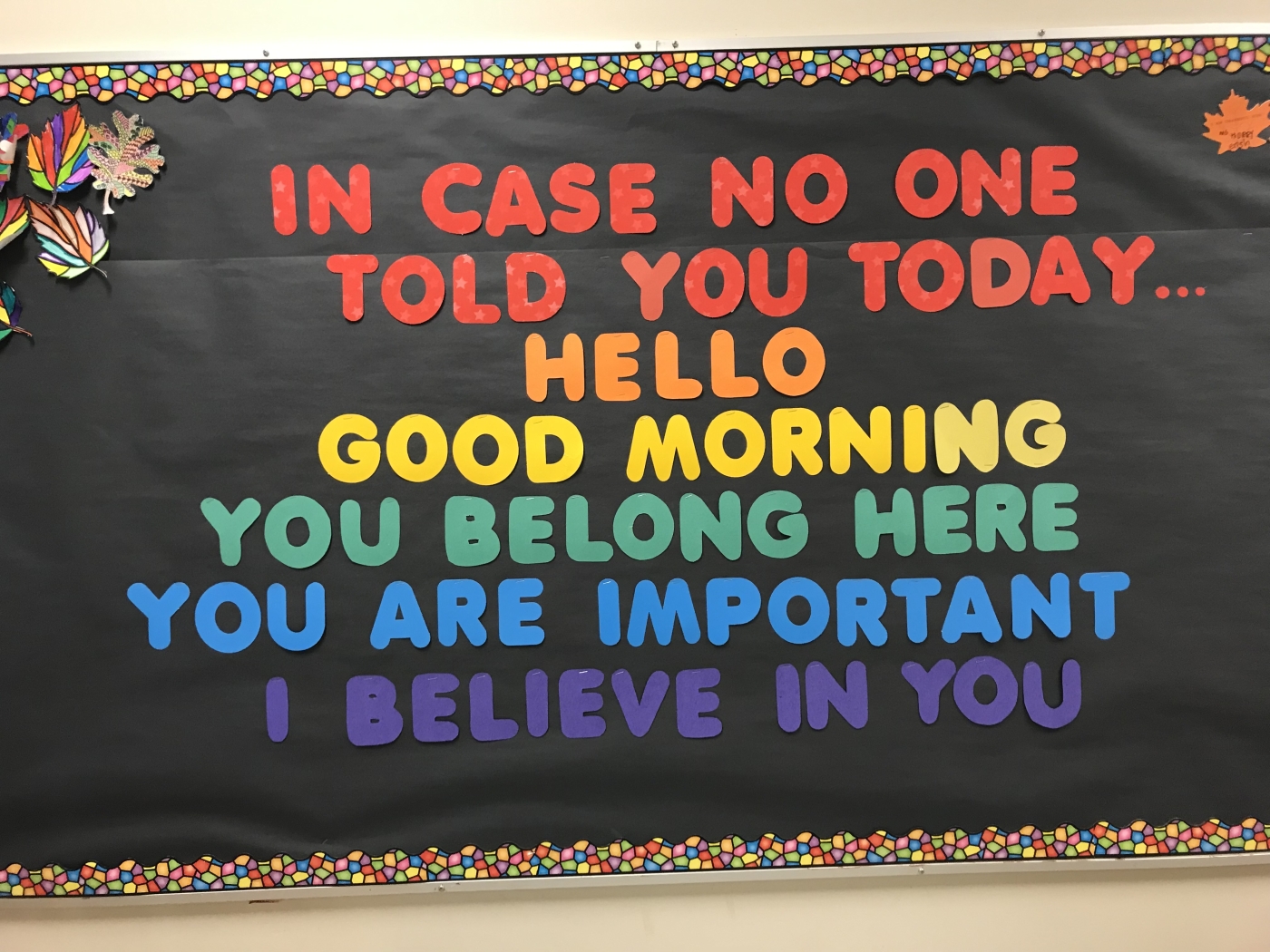
OUR LEARNERS
The core competency of communication is embedded across all areas of learning in BC’s curriculum. It is central to supporting our learners develop their literacy skills as they collaborate, problem solve, share ideas, exchange information, and express individuality. Our students have made significant progress in developing literacy skills and continue to demonstrate growth.
Our learners collaborate, communicate, and think critically about their learning.
Our students participated in “Talking Circles” to learn how to reflect on communicating their feelings in order to develop problem solving skills.
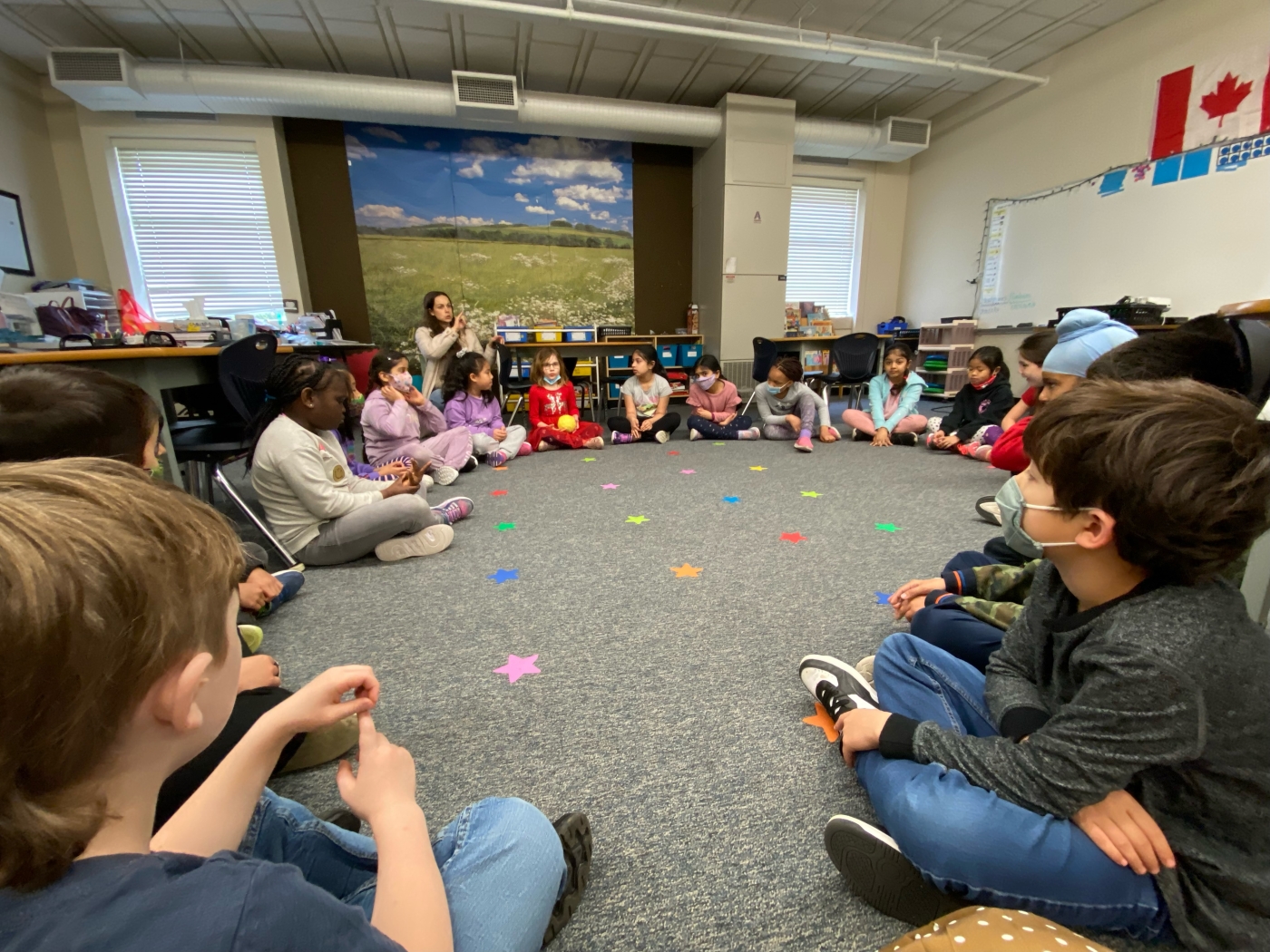
Our learners understand that learning requires exploration of one’s identity. They can communicate pride in who they are and what they can do through images and written language.
Our upper intermediate learners have been working on creating diverse stories about perseverance that are inspired by their own culture. They recognize that we need more stories with protagonists that look like them and share their experiences. First, they explored children’s storybooks to help them understand and explore different perspectives and make connections to others and the world. By learning the elements of narrative writing and researching their own culture, students were able to demonstrate their learning and express themselves through oral, visual, and written language. Understanding the concept of equity plays a role in how they perceive the world around them.
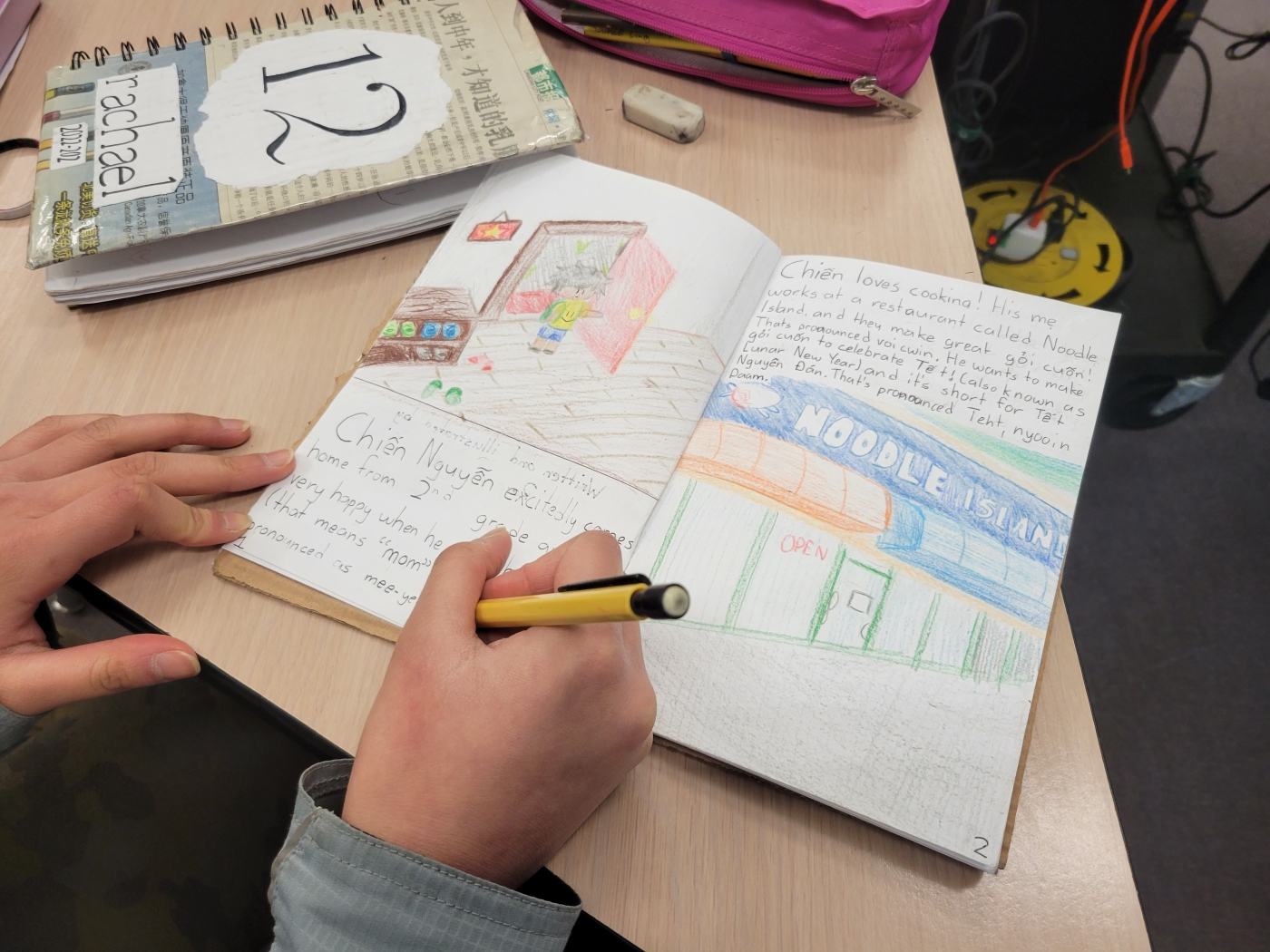
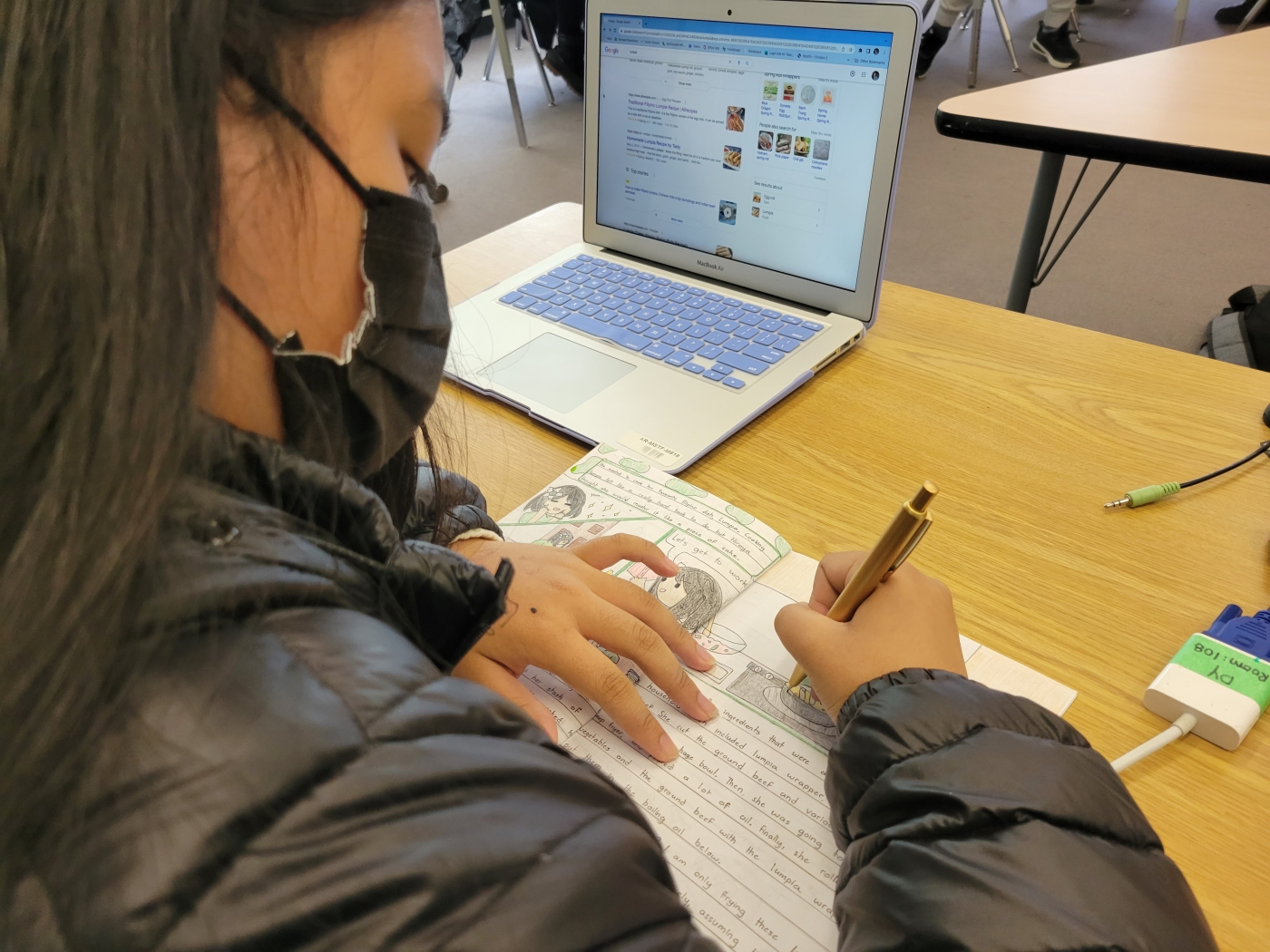
Our learners are demonstrating a sustained curiosity about a topic of personal interest, identifying questions to answer or problems to solve, and planning appropriate investigations to answer their questions.
One of our classes has started working on an inquiry driven project. They are exploring topics related to Indigenous knowledge. Such topics include: How do you make moccasins? Why does a canoe float? What does the button blanket represent?
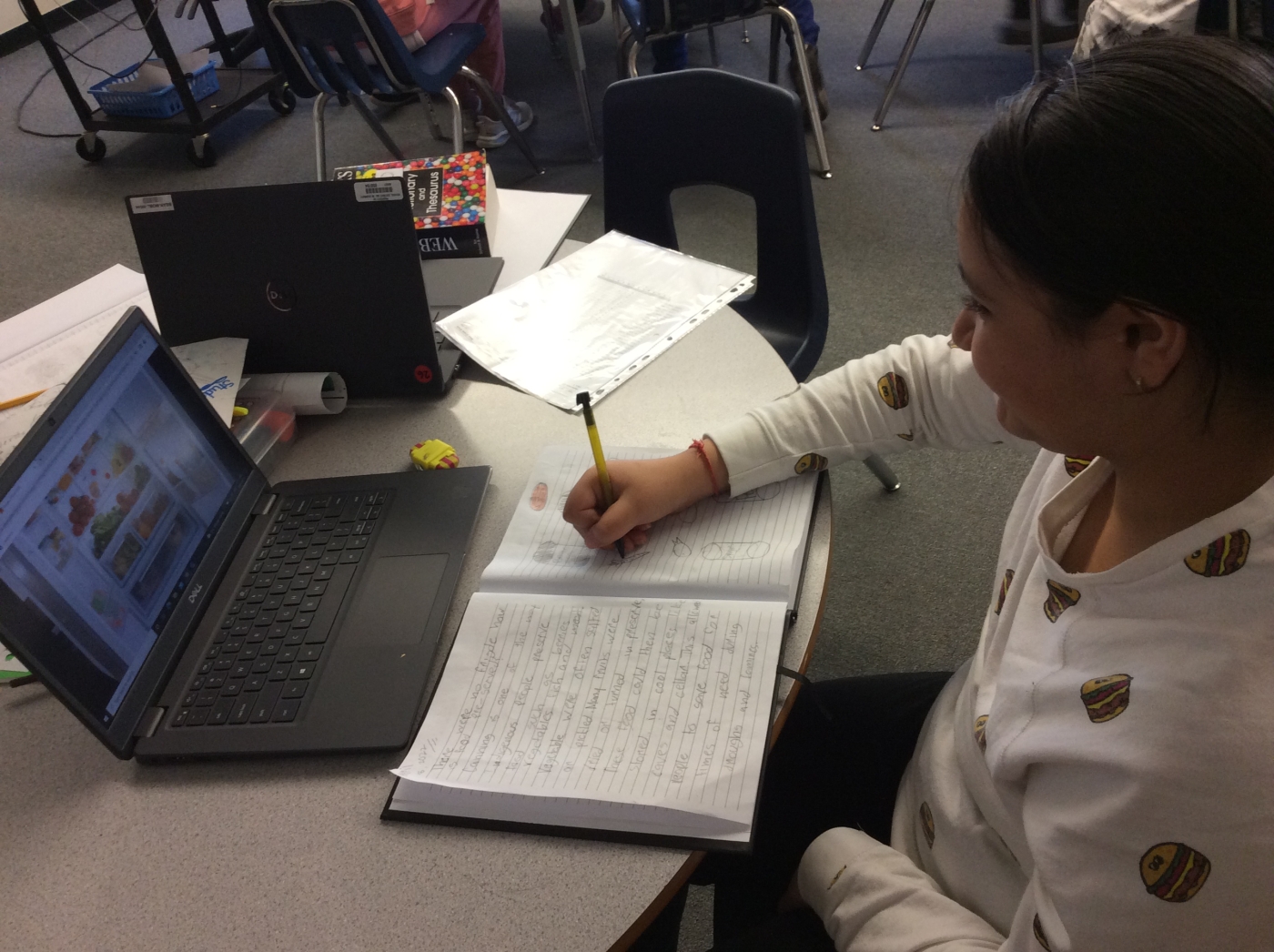
OUR FOCUS
Each and every day, among the variety of learning experiences presented to our learners, our team of educators focus on thinking, reading, writing, and communication in all curricular areas. Our aim is to build strong literacy foundations that are fundamental for students’ participation in today’s world.
In the classroom, our teachers are working with curriculum in purposeful and intentional ways, designing learning experiences that are relevant, meaningful, and support students in achieving their goals. Our Student Learning Plan documents the learning journey of two cohort s of students across the grades at Bear Creek Elementary in developing literacy skills.
Our students’ learning goals include:
- Developing students' phonemic awareness to support in identifying and manipulating units of words.
- Making sense of what they are reading by asking questions, making inferences, and creating mental images to comprehend text.
In early primary, our learners participate in hands-on learning using multi-sensory strategies to develop phonemic awareness, which supports identification and manipulation of units of words.
Phonemic awareness is the ability to hear, identify and manipulate sounds in words. One of the most powerful and well-established findings in the research on beginning reading is the important relationship between phonemic awareness and reading achievement. Research indicates that it is the best predictor of the ease of early reading acquisition. Our students have been working since September on their phonological awareness skills such as:
- Rhyming: These are two words that have or similar ending sounds (some examples are; goat, boat, moat, float)
- Syllables: Counting syllables in familiar words
- Segmentation (first sound isolation): What is the first sound in mop? (mmm – making the sound of the letter and naming it)
- Blending: What word am I trying to say? Mmmm-oooo-p. (Mop)
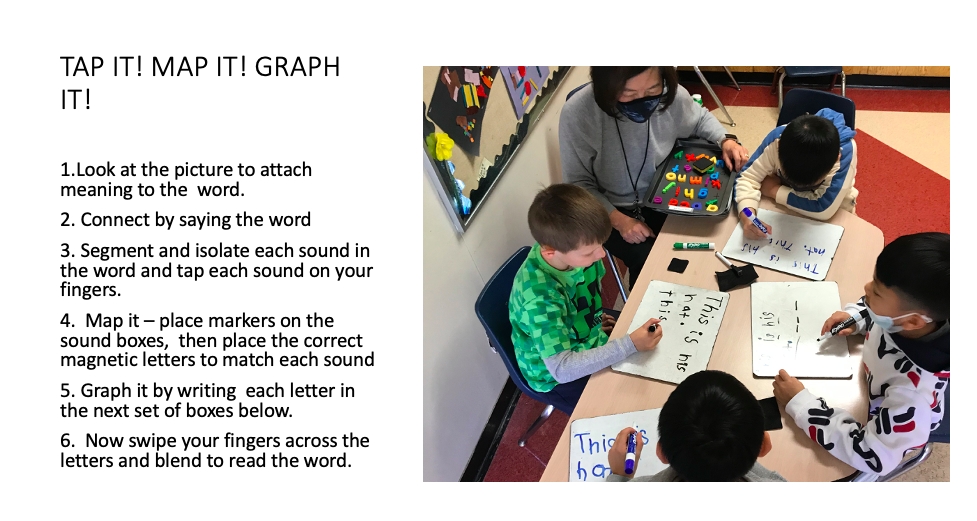
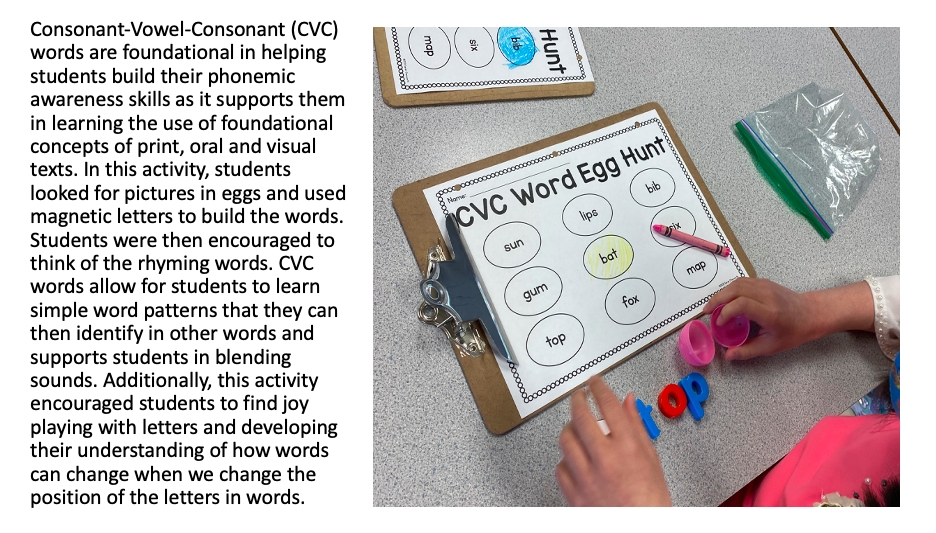
Our learners approach learning with curiosity as they make sense of what they are reading. Opportunities are provided for our students to use language in creative and playful ways to help them understand how language works. For example, students work in small groups to infer what is happening in the text. Students use clues in the text to discover what is not directly stated. Inferring is an important skill for students to learn when developing their comprehension skills as it helps them to understand information that is not directly implied and helps them draw conclusions about a text. Students are also encouraged to work as detectives to look for and highlight the clues in the text. When we are building our comprehension skills, we like to think of ourselves as detectives as they ask questions, make observations, and analyze evidence.
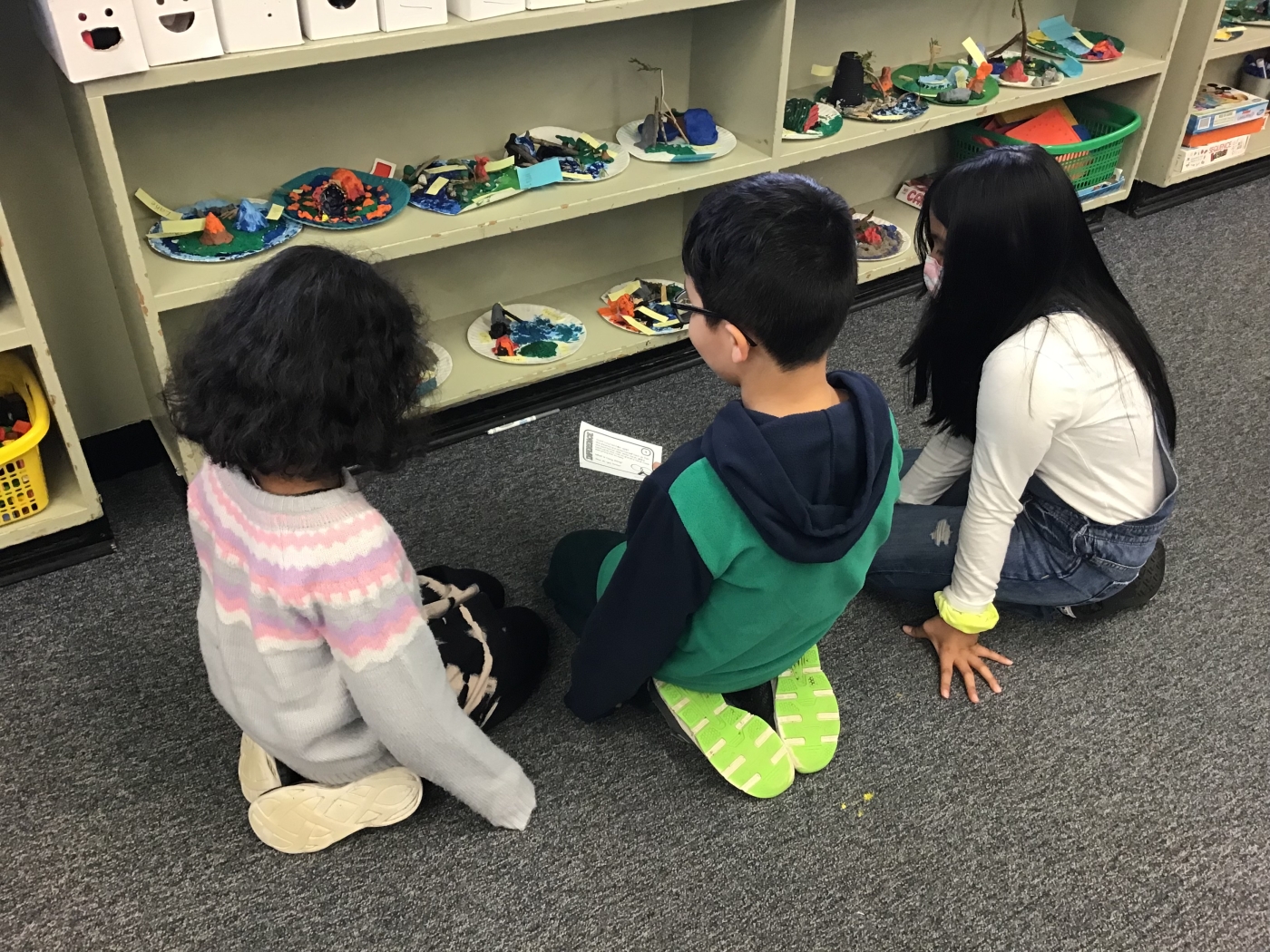
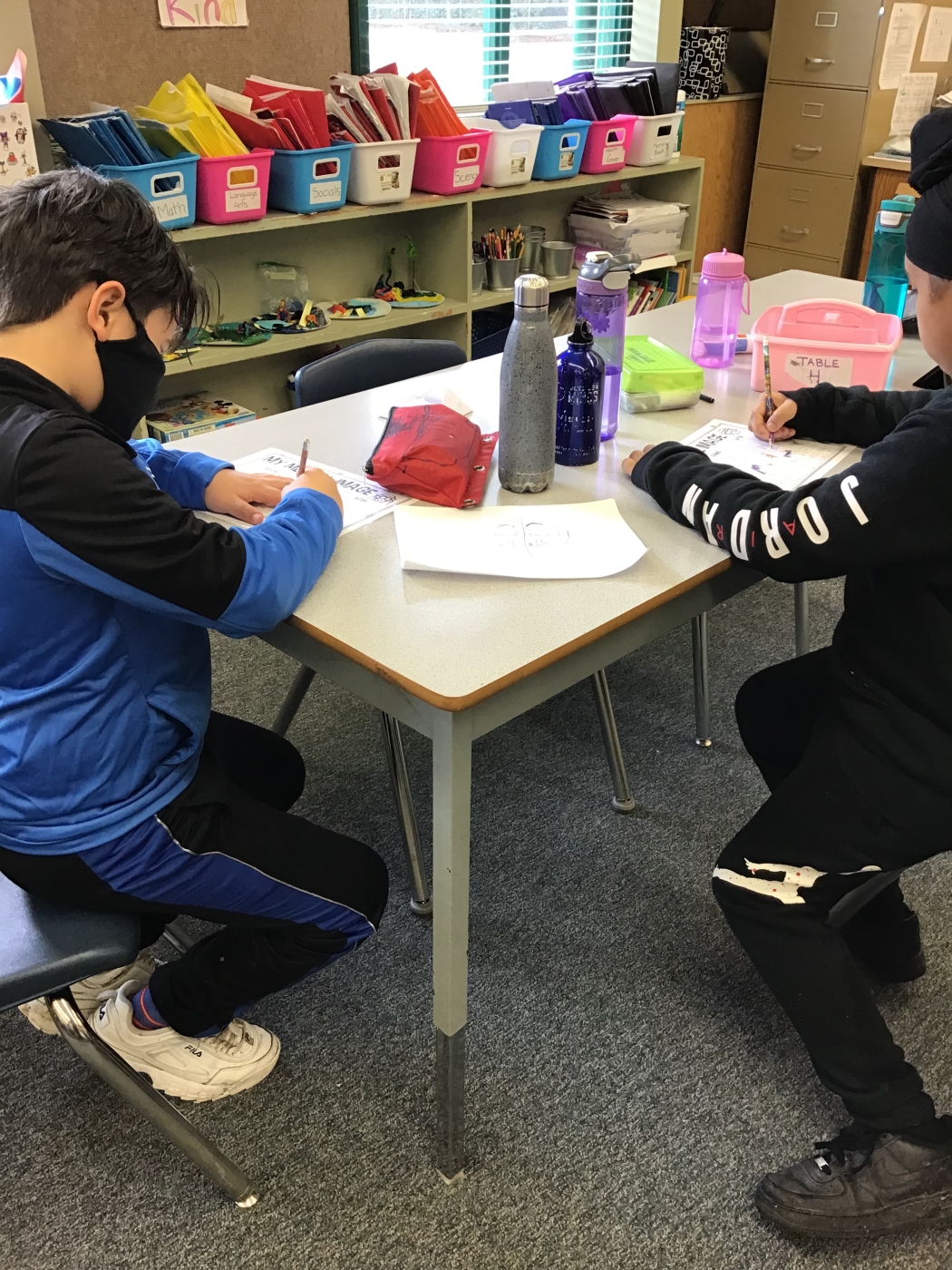
OUR NEXT STEPS
Evidence of our students’ learning demonstrates that our literacy focus is positively impacting both cohorts of learners. When surveyed and asked to communicate their students’ progress using the provincial assessment scale, teachers from both cohorts indicated that all students demonstrated growth in relation to our literacy goals:
Goal 1: Developing students' phonemic awareness to support in identifying and manipulating units of words.
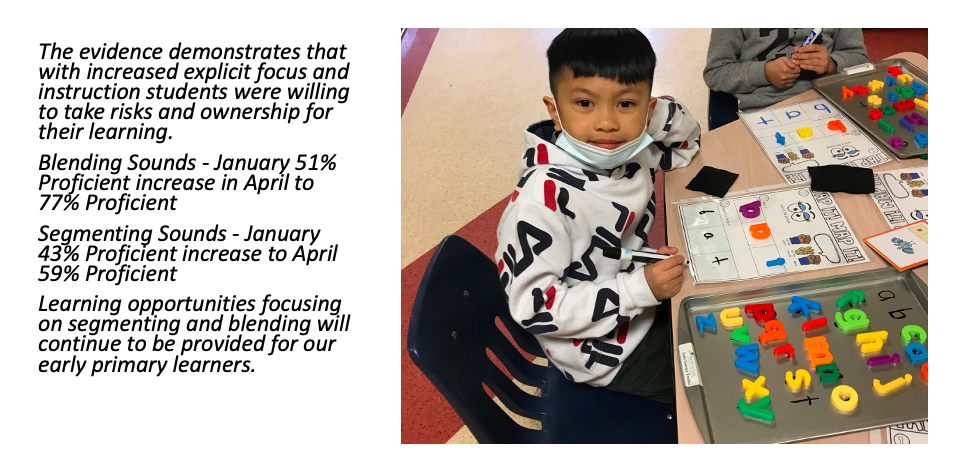
Goal 2: Making sense of what they are reading by asking questions, making inferences, and creating mental images to comprehend text.
The chart below highlights the learners' growth in reading skills. The most notable progress is seen from Fall to Spring with our students who were 'Emerging' in making sense of what they were reading. In the Fall 21 % of the students were 'Emerging' whereas in the Spring only 11% were 'Emerging. The proficiency level of students also increased to 53% from 45%.
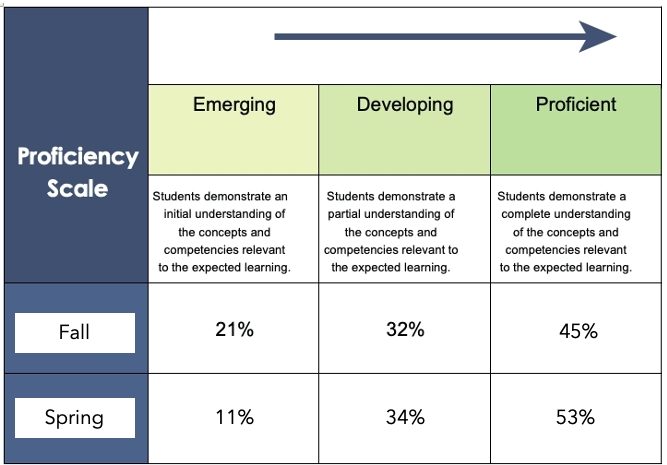
This is a learning activity used to help students work toward their comprehension goal:
Find the Evidence: In this activity students are working to find the evidence in the text to support their answer. Students work as detectives to look for and highlight the clues in the text. When we are building our comprehension skills we like to think of ourselves as detectives as they ask questions, make observations, and analyze evidence.
My Mental Image: In this activity students are working towards developing their visualizing skills. The students are shown the poem “My Neighbor’s Dog is Purple” and they draw a picture of their mental image before, during, and after reading the poem. As the students read more of the poem their mental image changes based on the new information they receive. Visualizing is an important skill for students to learn when developing their comprehension skills as it helps students create a mental imagine in their mind that represents the ideas in the text they are reading.
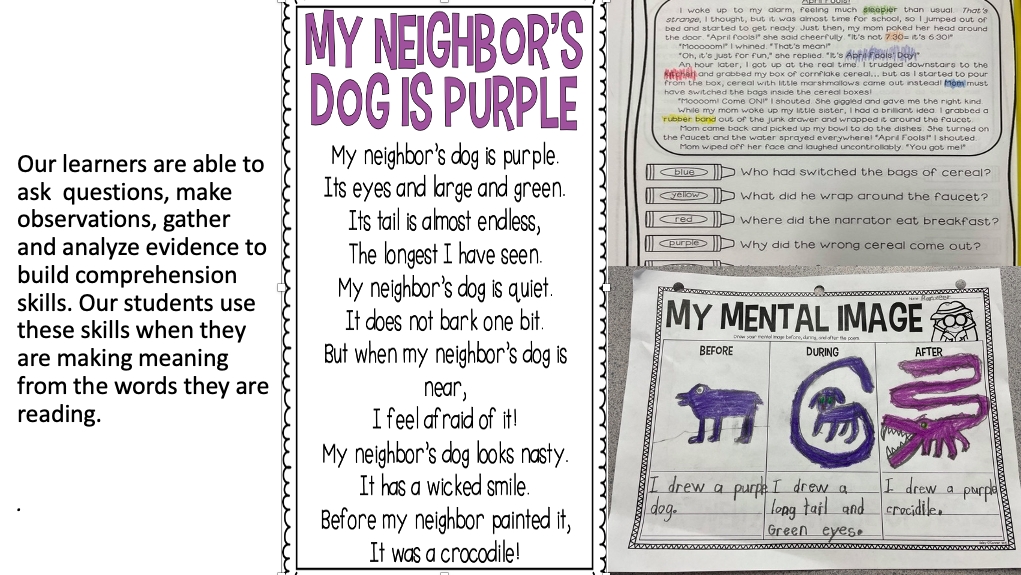
Moving Forward
Based on evidence of students’ progress in relation to our learning goals, our next steps will include:
At Bear Creek Elementary we are proud of the great progress our students have made in learning to read.
We will continue embracing the science of reading and actively using instructional strategies to decode letter and words. We will continue to intentionally teach strategies to improve our comprehension skills.
We will go deeper by reading a variety of genres to help students learn text structures and language that students can transfer to their own writing.
We will explore the connections between reading and writing. When students read, they should feel that understanding the text is their most important job, and when they write, they will know they are in charge of creating a connection with their readers.
